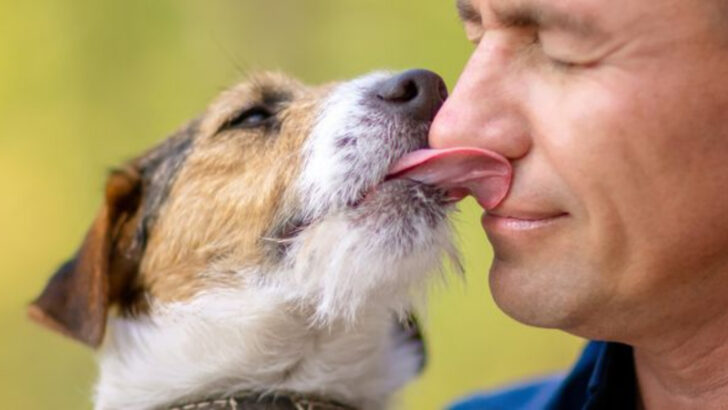That slobbery kiss on your cheek? It might mean more than love—or something completely different. Dogs don’t just lick for affection. They lick when they’re anxious. When they’re curious. When you’ve got crumbs on your face. Sometimes, it’s a doggy compliment. Other times, it’s more of a warning sign. What looks like sweetness can actually be a message in disguise—and if you’re not paying attention, you might miss something important. So before you wipe it off with a chuckle, take a second look. Your dog might be trying to tell you something… one lick at a time.
Affectionate Gestures
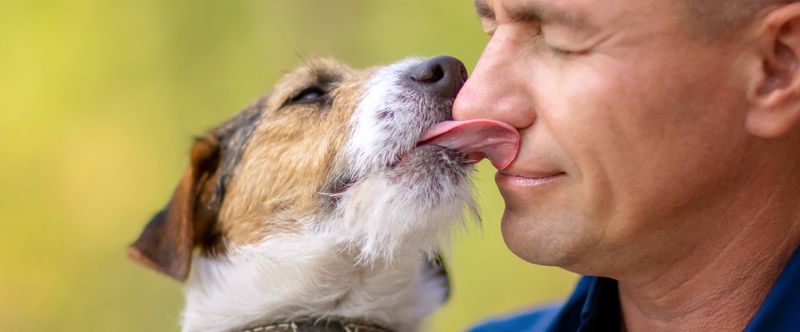
When your dog approaches with a wagging tail and a soft lick to your hand, it’s likely expressing affection. Dogs often use licking as a way to show love and strengthen bonds with their humans. This gentle gesture can be compared to a mother dog licking her pups, which is a nurturing act.
The warmth of their touch is often accompanied by a sense of security and trust. This behavior fosters emotional closeness, making both the dog and owner feel valued in their relationship.
Next time your dog licks you, cherish that moment of connection.
Seeking Attention
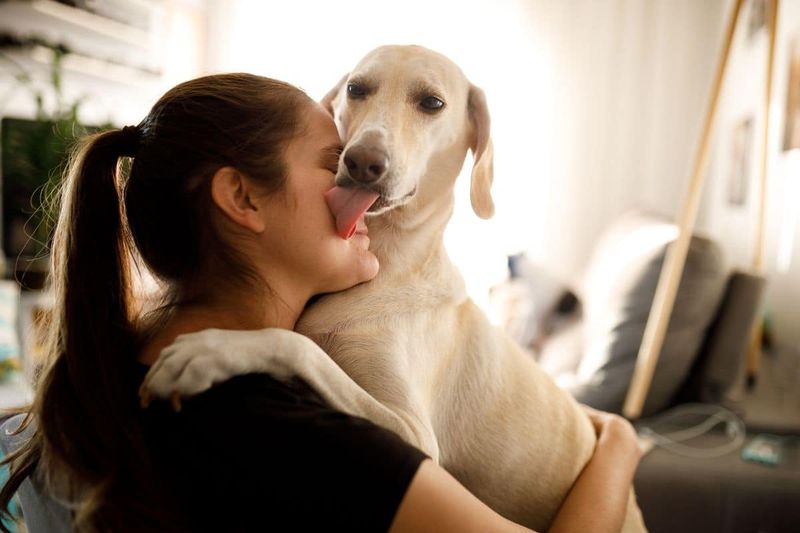
Imagine being engrossed in work, only to feel a gentle nudge followed by a lick. This is your dog’s way of saying, “Hey, look at me!” Dogs often resort to licking to capture their owner’s attention, especially when they feel left out or ignored.
This behavior is their non-verbal way of saying they need interaction or playtime. By acknowledging this gesture, you can reinforce positive engagement.
Whether it’s a nudge, a bark, or a lick, dogs have their unique ways of communicating their needs.
Exploring the World
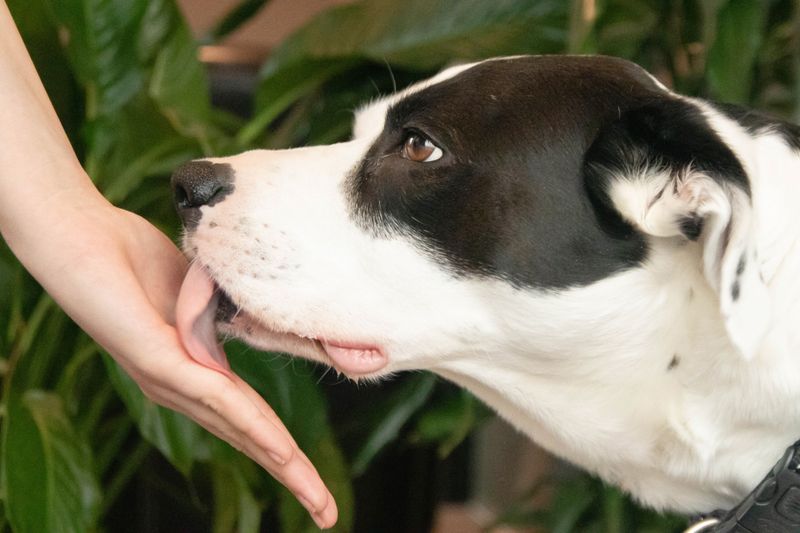
Puppies, much like infants, explore their surroundings by tasting and licking. This behavior helps them gather information about their environment. From the texture of a new shoe to the taste of a garden plant, everything is a new discovery.
Licking allows them to understand what’s safe, tasty, or simply interesting. It is vital to supervise these explorations to ensure they don’t ingest harmful substances.
By allowing safe exploration, you help nurture their curiosity and learning.
Expressing Anxiety

Licking isn’t always a sign of joy. Dogs sometimes lick themselves excessively when anxious or stressed. This repetitive behavior can be soothing, acting as a self-comforting mechanism similar to humans biting their nails.
Triggers could be thunderstorms, separation anxiety, or changes in routine. Observing when and why your dog licks can help you address underlying stressors.
Providing a calming environment or speaking to a vet can help alleviate their anxiety.
Tasting Something Delicious

Did you just finish eating, only to have your dog eagerly licking your face? Dogs are incredibly driven by scents and tastes, and a lingering aroma can trigger licking.
This behavior isn’t just about food; it’s a sign that your dog finds the leftover taste appealing. While it might be amusing, it’s good to guide these actions to avoid unwanted habits.
Next time, redirect their attention with a treat or toy.
Communicating Submission
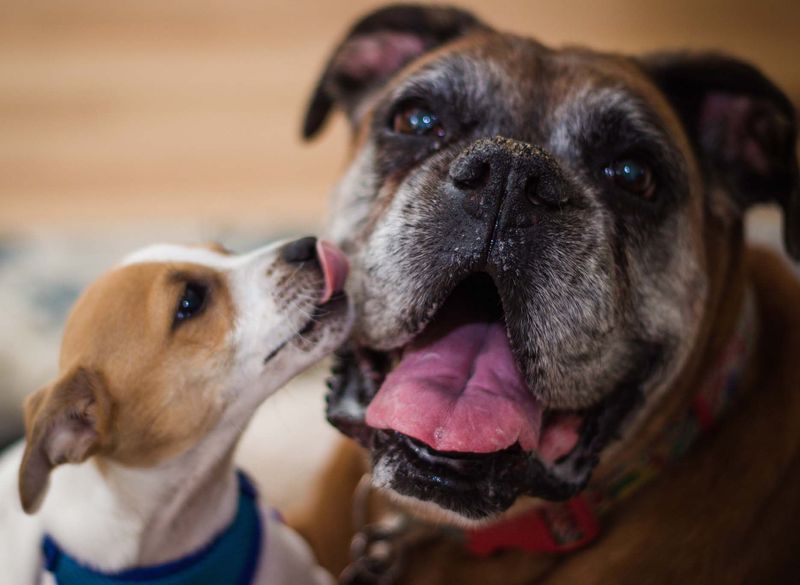
In the canine world, licking often signifies submission. When a dog licks another’s muzzle, it’s showing deference and respect. This behavior is a way for dogs to navigate social hierarchies and maintain harmony within their pack.
Understanding these gestures can help define their social interactions. Observing these interactions is crucial in multi-dog households to ensure a peaceful coexistence.
Encouraging positive social behavior enhances group dynamics.
Indicating Health Issues
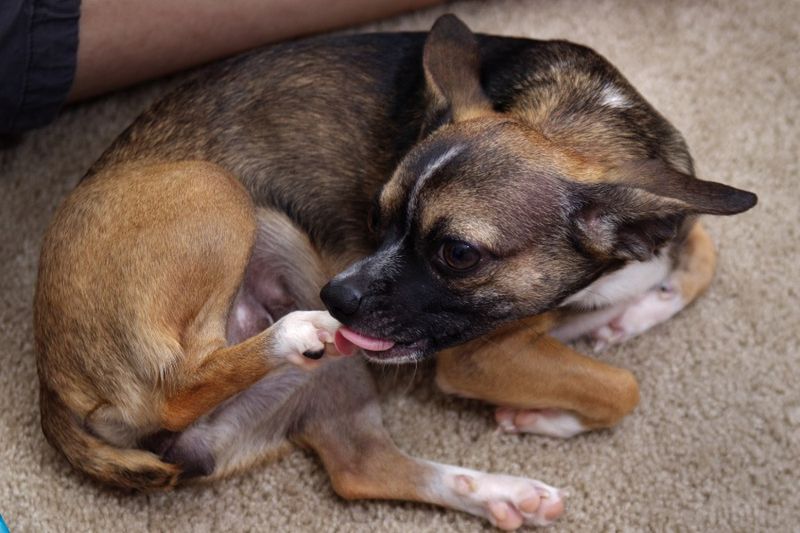
Excessive licking can sometimes be a symptom of health problems. When a dog licks a specific area persistently, it might indicate discomfort, irritation, or pain. This repetitive action can be a way of soothing an ache or itch, often pointing to allergies or infections.
Monitoring your dog’s habits and visiting a vet for persistent licking is advisable.
By addressing these health concerns early, you ensure your dog remains happy and healthy.

